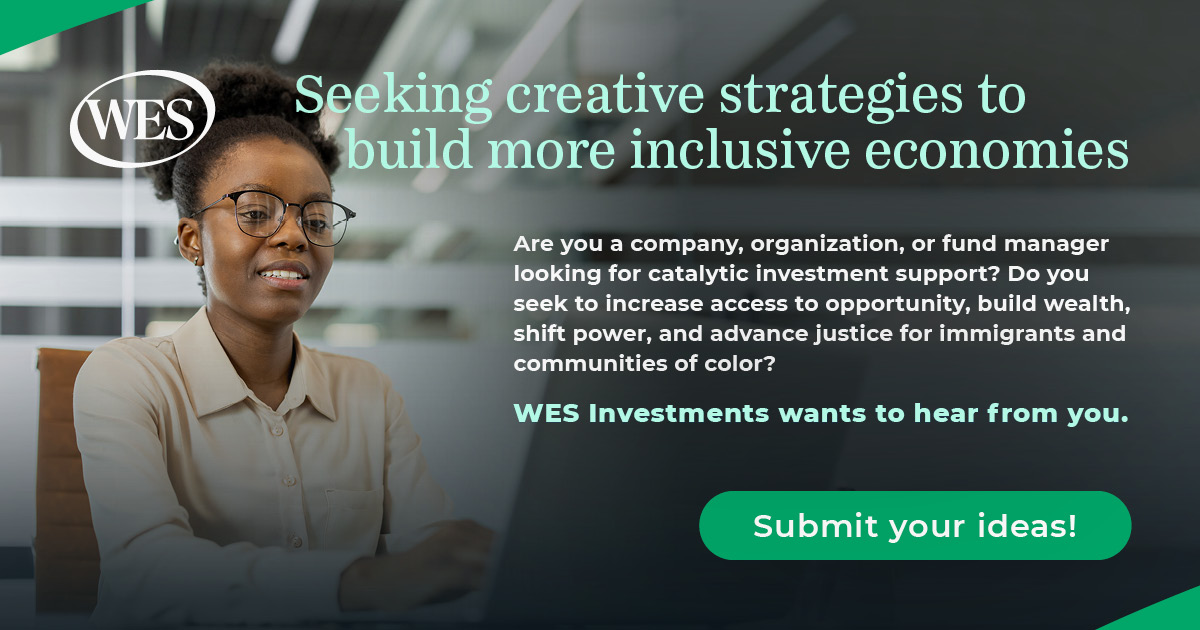In my role as a leadership consultant, I was recently in the room at a global firm’s headquarters when a senior territory head told the assembled group how his company had lost virtually an entire team to a much smaller competitor. One day, this team had simply uprooted and left. The facts of the story were surprising enough, but his reaction was even more shocking to me.
“We will crush them!” he barked, with no curiosity about why the exodus might have happened. In a single stroke, he dismissed anything of value he might have gleaned from the situation. We never did find out why all those team members left, or what was more appealing to them about the competitor. And the leader didn’t learn anything that could improve his own game and that of his organization.
The role of competition in traditional business
While perhaps an extreme example, that executive’s reaction is a good illustration of what traditional competition looks like in business. Conventional narrative dictates that business is the place where battle lines are constantly drawn, where we are separated into “us” and “them,” where we create winners and losers, and where our sole ambition is to steal market share. Conventional business wisdom dictates that we draw our boundary lines tightly around ourselves, extending our company’s interests only as far as the doors of our office buildings. Frequently, we also draw boundary lines of competition within our companies, dividing ourselves into teams and departments, which often results in siloed thinking and a lack of communication, frustrating our efforts to achieve results. Beyond our organizations, we treat our competitors as the enemy.
Business’s changing landscape
But things are changing. Many of our modern business challenges and opportunities are too complex to be figured out by the minds of just one person or a few people, or even one company, for that matter. Staying current, innovating, responding to moving targets: these challenges confound our logical minds as well as our past experience. The old forms of competition aren’t cut out for these new realities. We need to draw on something different: our collective human resourcefulness. We need to begin seeing ourselves as sources of wisdom, insight, and ideas whereby — together — we can come up with better pioneering solutions than we could on our own. Luckily, this is already starting to happen.
We are entering a new era, that of the “collaborative economy” or
“everyone-to-everyone” (E2E) economy, where we co-operate to create value and where collaboration trumps small-minded competitiveness. As we realize how interconnected we all are and the possibilities of what we can create together, it stops making sense to play the game of business in a small-minded way, as if we are somehow separate from others. Collective intelligence is where it’s at; We-Q supersedes IQ, and we create solutions and innovations together that we could not create on our own. We get to compete in a way that brings out the best in each and every one of us. It’s about everyone playing at their best.
It is collaboration, rather than competition, that accesses our collective intelligence. Collaboration features highest on the list of CEO priorities in IBM’s CEO studies, which survey thousands of global CEOs every couple of years. Taking a longitudinal view, we can see how the theme of collaboration has inched further into the foreground of the minds of business leaders the world over. In 2008, the surveyed CEOs reported that their biggest headache was the unprecedented scale of change they were facing and the ever-increasing complexity they were required to manage.
By 2010 and 2012, they were becoming fascinated with how they could increase creativity to find ways through this complexity. In the latest studies from 2015, what the CEOs said is even more clear is how important it has become to lead with bold creativity by connecting with customers and a wide range of other stakeholders in imaginative ways. In fact, these CEOs favor “purposeful partnerships” by which a variety of stakeholders can collaborate with a specific goal in mind. They reported expecting collaboration to feature even more heavily in the next three to five years. As one leader I came across said: “If I get 10 more perspectives, my IQ goes up by 10 points.”
Obstacles to letting go of the competition mindset
Talking about collaborating is one thing; doing it can be entirely another. What gets in the way?
One habit worth examining is what happens when our egos get into the driver’s seat. Competition is founded on a mindset of scarcity. With our egos in charge, we are more likely to believe that the pie is only so big, and if you get a larger slice of it than I do, then I am losing out. Ego provokes us to play small, defensively, warily, and, yes, destructively, as the example of the senior leader showed earlier. When we adopt the mindset of scarcity we operate from fear. This makes us less willing to trust others and more likely to cling to what we’ve got — or try for more to secure our own survival. Traditional forms of competition play seductively into our egos.
Moving from the “me” to “we” thinking typified by collaboration — including collaboration with our competitors — requires a mindset shift. We need to begin thinking about what’s in it for all of us; how we can all benefit in a larger game. One leader who epitomizes this way of thinking is Tom Chi, an innovator whose business pedigree includes executive roles at Yahoo, influencing the creation of Microsoft Outlook, and shaping Google X and Google Glass. Chi thinks big — universally big. “Collaboration versus competition is a false dichotomy,” he says. “People often say the natural state of nature is competition, but that’s not so. Every living thing, through its life cycle, improves the viability of life of every other thing in the ecosystem in the process of living its own life. The fact that we consider competition and collaboration to be opposites is a completely human construct. This is just us identifying two attributes of the natural world and pretending they’re in opposition. In truth, both things coexist effortlessly as part of a single thing, but this single thing is harder for us to identify. Because it has so much nuance and dimensionality to it, our perceptual models to understand it do not fit it very cleanly.”
What Chi is reminding us of here is that when we zoom out really, really far, the whole of life is one undivided entity and it is only our mental models that carve it up into “mine” and “yours.” Business — especially conscious business — plays into this greater context. When we compete in conscious business, it’s worth asking ourselves: who are we competing with? And what are we competing for? Is it for our own gain? Or for the gain of everyone? Given these answers, how can we go about competing wisely?
Wise competition in action
This mental switch tends not to be a natural stance for most of us, and we can easily fall back into a scarcity mindset, but for those who are interested in developing as conscious leaders and who want to run conscious businesses, it’s a question of catching ourselves in the act of playing small and reminding ourselves what the bigger context is. Rather than looking to compete, win, and achieve at all costs, conscious leaders can look to compete, win, and achieve together with others, for the benefit of many. Often they will seek to partner with so-called competitors to come up with new solutions and innovations that serve the greater good.
One leader who walks this line very consciously is Laura Roberts, CEO of Pantheon Enterprises, a conscious chemical company. Roberts is ultimately driven by her higher purpose of changing how the chemical industry operates, producing chemicals more responsibly and sustainably and not just pumping generated chemicals back into the ground with little regard for their effects.
Roberts’ purpose provides the context for how she makes decisions, how her business competes, and how this drives Pantheon’s innovation. One of Pantheon’s practices is the creation of a large stakeholder map, visible to all. One branch lists stakeholders who used to be called “competitors,” except that this branch is now called “future potential partners.” “I want everyone inside the company to understand that even though someone might look and feel like a competitor in a traditional sense, they really are all future partners and customers,” Roberts says. “We live in a world of possibility. We can ask ourselves: what is still possible even though the current circumstances look like this today? Oftentimes I find that people who are more conscious can hold bigger containers for possibility. You’re trying to have bigger conversations. Granted, resources can get in the way, but if you push possibility conversations more often, and you role-model it, too, that helps.”
On a large, established scale, Proctor & Gamble Co., for example, uses the advantages of conscious competition to drive its innovation strategy called Connect + Develop. P&G recognizes that one of the greatest challenges facing companies today is the range of innovation required. In answer, P&G collaborates with a whole range of stakeholders — inventors, suppliers, joint ventures, startups, and competitors — to drive more than 50 percent of its new initiatives. The benefits it enjoys are widespread: innovating outside of its specific areas of expertise, increasing the number of ideas taken to market, reducing risk by transforming potential competitors into collaborators, and encouraging more ideas to come forward.
On the other side of the world, Dutch healthcare company Buurtzorg, which quickly secured 60 percent of its market, is so connected to its organizational purpose — to increase autonomy and meaningful life for sick patients in the community — that its founder publishes the company’s playbook in great detail to encourage the competition to imitate him. From an old paradigm, this makes no sense — why would you give away your secrets? From a conscious perspective, it makes no sense not to. More players in the market serving your united purpose ensures the purpose will be fulfilled more quickly.
Whether it is large multinationals like P&G or much-loved players like Patagonia — which is nudging competitors like Nike and The North Face into using more sustainable materials by sharing its innovations in plant-based wetsuit technology — what becomes clear is that we cannot practice conscious competition by thinking about competing in the old way. If we come at it from a scarcity mindset, we’re only driving combative thinking. If we hold our higher purpose in mind, we begin to look for ways to serve that purpose beyond what we can do ourselves.
What conscious leaders do
Being conscious of a bigger context for the nature of competition is a daily practice, one that needs to be revisited as your company goes through its paces. With a higher purpose held firmly in mind, especially one that contributes to the whole of society or to the planet, it doesn’t make sense to be fighting for scraps on the ground. Better, for the benefit of all, to be thinking about what we all need for the prosperity of everyone. Conscious leaders starting and running enterprises can help create this kind of culture in their organizations by dialing down fear and increasing the sense of confident abundance throughout their company, so that collaboration and innovation can flow more freely.
One conscious leader who does this admirably is Sudhakar Ram, CEO of Mastek Ltd., a multinational and publicly traded IT company. Ram is intent on creating a company that is free of fear. “I try to come from a sense of abundance; that there are enough opportunities and enough choices,” he explains. “In Mastek, we’ll always create a situation where there is enough work for us. Although business is ingrained to be all about the self, all about surviving and beating the competition, winning at all costs, I’m about instilling an attitude of ‘Can we operate from a sense of abundance?’ As long as we get enough meaningful work for our people and we’re viable as an organization, that’s good enough. We don’t need to be number one in the world. That’s the context we set, which hopefully creates for our people the ability to exercise choice, freedom, and self-expression without being bothered that they are putting themselves at risk in any way.”
Chi, for his part, holds in mind a vast context for competition and creation. “We get to choose when we apply the tools of creativity, and at what scope of compassion and consciousness we do it,” he points out. “Do we try to do it for seven billion people for 1,000 years, or do we do it for ourselves or for a smaller set? For example, for our company for this quarter — a very micro perspective. It’s actually even more micro than that — most people serve just a subset of their ego, not even their full ego. Our normal operating size is usually smaller than one person!”
Through these examples, we get to see how conscious leaders model a particular mindset around competition in and around their companies. The way they manage their own reactions to the competitive business environment plays a crucial part in the way they help form their company’s culture and set up an atmosphere for innovation, and the way the company interacts with its stakeholders in the outside world.
What becomes possible when we think about joining forces with those who might be traditional “competitors,” whom we don’t usually speak to, but with whom we might create something entirely new? What benefits might we create through the vehicle of business that positively impacts a larger proportion of people and the planet? Finally, while all of us build on these concepts and our understanding of conscious business develops, what partnerships are you willing to explore in the ways you think about conscious competition in your business?
Next Steps
7 Questions to Ask Yourself to Shift Your Competition Mindset
1 // How are you leveraging collaboration and collective intelligence in your company?
2 // From which under-represented corners of your organization can you seek input?
3 // Where would you choose to recast the boundary lines with your competition?
4 // What opportunities exist to create potential partnerships with your competitors around a common purpose?
5 // What does a win look like for you, for them, and for society?
6 // What is the value that can be created from innovating with your widest circle of stakeholders?
7 // Who else benefits when your organization benefits?






